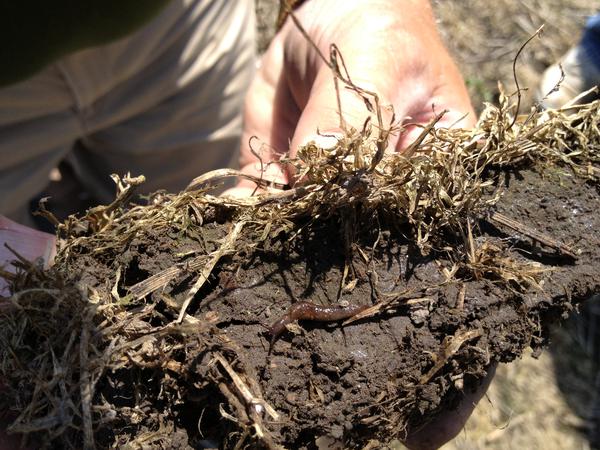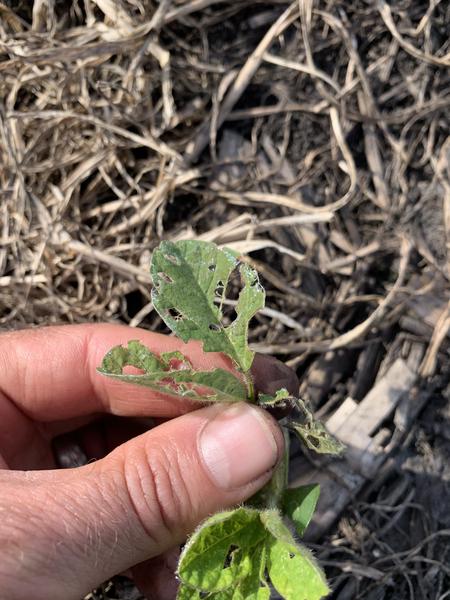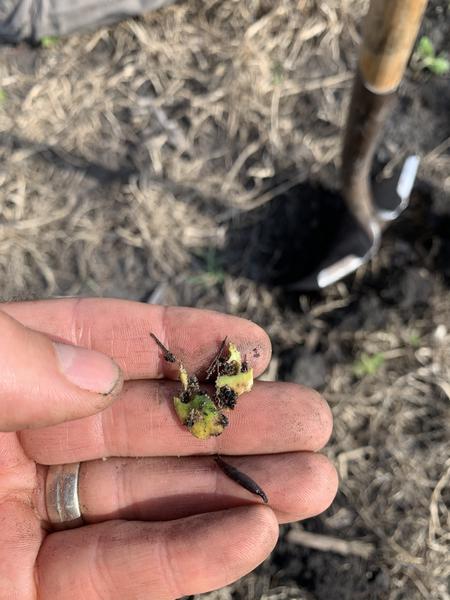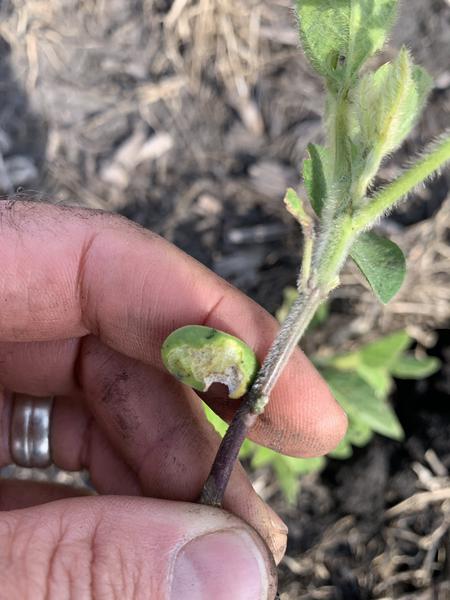Slugs
Deroceras reticulatum (Müller), Deroceras leave (Müller), Arion subfuscus (Drapamaud), and Arion fasciatus (Nilsson). Slug species have never been surveyed in North Carolina, but the most common species are likely D. reticulatum and D. leave.
Biology and Identification
Slugs can be differentiated from snails based on the absence of their shell. They are slimy and when they move, lead with a pair of tentacles protruding above their body, which distinguishes them from earthworms. Juvenile and adult slugs look similar, except in size. Signs of slugs, such as their shiny dried slime trails or damage from their feeding, are often apparent before slugs are noticed. Slugs overwinter as eggs in fields, hatching during the spring. The larvae continue to develop to adulthood through the summer, laying eggs again to complete one generation a year.
Feeding Injury and Damage
Slugs will feed on and injure plants throughout the growing season, but are only damaging when plants are seedlings (typically prior to V3). Slugs can defoliate seedlings or destroy germinating seeds or entire seedlings. Defoliation is less of a concern than stand loss. One study simulated slug damage by removing half the first trifoliates in a field of seedling soybeans; this did not lower yield. However, moderate to high slug densities that impact plant stands can cause significant yield losses.
If populations are abundant during the fall, slugs may be a problem the following spring. Slugs tend to be worse in early-planted fields during cool wet springs, when seedling growth is slow and moisture is abundant. Furthermore, the expansion of conservation tillage, cover crops, and the use of insecticidal seed treatments has increased slug incidence. Once slug eggs hatch, the larvae generally need to feed for a week or two before damage is noticeable. Hence, this residue can provide a food source in the spring prior to soybean planting and tends to increase moisture levels.
Economic Threshold
There is no economic threshold for slugs in soybeans, since remedial management methods are generally impractical. If stand loss is severe, growers may consider replanting.
Insecticide Management
Slugs are not insects and insecticides are ineffective to control them. Insecticidal seed treatments have been shown to increase problems from slugs because they kill beneficial insects, such as ground beetles, that prey on slugs. Therefore, insecticides should be avoided at all costs when slugs are an issue. Best management practices for slugs include tillage, removal of residue at planting (e.g., row cleaners and strip tillage), and ensuring that the furrow closes completely when planting. Waiting for weather to turn hot and dry is often the best slug management tactic.
Publication date: May 19, 2020
N.C. Cooperative Extension prohibits discrimination and harassment regardless of age, color, disability, family and marital status, gender identity, national origin, political beliefs, race, religion, sex (including pregnancy), sexual orientation and veteran status.




